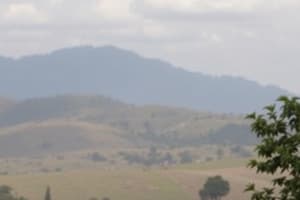Podcast
Questions and Answers
Un nombre propio designa a cualquier tipo de persona, animal o lugar.
Un nombre propio designa a cualquier tipo de persona, animal o lugar.
False (B)
Los nombres comunes pueden ser clasificados en individuales y colectivos.
Los nombres comunes pueden ser clasificados en individuales y colectivos.
True (A)
El género de los nombres puede ser masculino o neutro.
El género de los nombres puede ser masculino o neutro.
False (B)
El nombre 'Eduardo' es un nombre común.
El nombre 'Eduardo' es un nombre común.
Los nombres pueden estar en singular o plural.
Los nombres pueden estar en singular o plural.
El nombre 'rebaño' es un ejemplo de un nombre colectivo.
El nombre 'rebaño' es un ejemplo de un nombre colectivo.
Los nombres femeninos siempre terminan en 'o'.
Los nombres femeninos siempre terminan en 'o'.
La palabra 'tigre' es un nombre masculino.
La palabra 'tigre' es un nombre masculino.
El número de un nombre se refiere a su singularidad o pluralidad.
El número de un nombre se refiere a su singularidad o pluralidad.
Los nombres no son utilizados para designar objetos.
Los nombres no son utilizados para designar objetos.
¿Cuál de los siguientes ejemplos es un nombre propio?
¿Cuál de los siguientes ejemplos es un nombre propio?
¿Cuál de los siguientes es un nombre común?
¿Cuál de los siguientes es un nombre común?
¿Qué género tiene la palabra 'vaca'?
¿Qué género tiene la palabra 'vaca'?
¿Cuál de los siguientes es un ejemplo de nombre colectivo?
¿Cuál de los siguientes es un ejemplo de nombre colectivo?
¿Cuál es la forma plural correcta de 'el parque'?
¿Cuál es la forma plural correcta de 'el parque'?
¿Cómo se clasificaría 'alcaldesa' en términos de género?
¿Cómo se clasificaría 'alcaldesa' en términos de género?
¿Cuál de las siguientes palabras está en singular?
¿Cuál de las siguientes palabras está en singular?
¿Cuál de los siguientes pares tiene forma diferente para masculino y femenino?
¿Cuál de los siguientes pares tiene forma diferente para masculino y femenino?
¿Qué tipo de sustantivo es 'Albacete'?
¿Qué tipo de sustantivo es 'Albacete'?
¿Qué es un nombre individual?
¿Qué es un nombre individual?
¿Qué término describe a un nombre que designa a un conjunto de seres u objetos?
¿Qué término describe a un nombre que designa a un conjunto de seres u objetos?
¿Cuál de las siguientes palabras es un ejemplo de nombre propio?
¿Cuál de las siguientes palabras es un ejemplo de nombre propio?
¿Qué opción representa un nombre femenino en singular?
¿Qué opción representa un nombre femenino en singular?
¿Cuál es la forma plural correcta de 'la flor'?
¿Cuál es la forma plural correcta de 'la flor'?
¿Qué tipo de sustantivo es 'rebaño'?
¿Qué tipo de sustantivo es 'rebaño'?
¿Cómo se clasifica la palabra 'manzana'?
¿Cómo se clasifica la palabra 'manzana'?
¿Cuál de estas palabras es un nombre masculino?
¿Cuál de estas palabras es un nombre masculino?
¿Cuál de las siguientes parejas de sustantivos tiene forma diferente para masculino y femenino?
¿Cuál de las siguientes parejas de sustantivos tiene forma diferente para masculino y femenino?
¿Qué palabra representa un nombre singular?
¿Qué palabra representa un nombre singular?
¿Cuál es un ejemplo de nombre común?
¿Cuál es un ejemplo de nombre común?
Flashcards
Noun
Noun
A word used to identify people, animals, objects, plants, or places.
Proper Noun
Proper Noun
A unique identifier for a person, place, or thing, e.g., 'Guillermo'.
Common Noun
Common Noun
Refers to any type of person, object, animal, or place, e.g., 'león'.
Individual Noun
Individual Noun
Signup and view all the flashcards
Collective Noun
Collective Noun
Signup and view all the flashcards
Gender of Nouns
Gender of Nouns
Signup and view all the flashcards
Masculine Noun
Masculine Noun
Signup and view all the flashcards
Feminine Noun
Feminine Noun
Signup and view all the flashcards
Singular Noun
Singular Noun
Signup and view all the flashcards
Plural Noun
Plural Noun
Signup and view all the flashcards
Examples of Proper Nouns
Examples of Proper Nouns
Signup and view all the flashcards
Examples of Common Nouns
Examples of Common Nouns
Signup and view all the flashcards
Naming People
Naming People
Signup and view all the flashcards
Naming Animals
Naming Animals
Signup and view all the flashcards
Naming Objects
Naming Objects
Signup and view all the flashcards
Naming Plants
Naming Plants
Signup and view all the flashcards
Naming Places
Naming Places
Signup and view all the flashcards
Dual Forms in Nouns
Dual Forms in Nouns
Signup and view all the flashcards
Examples of Gendered Nouns
Examples of Gendered Nouns
Signup and view all the flashcards
Collective Example: Cubertería
Collective Example: Cubertería
Signup and view all the flashcards
Function of Nouns
Function of Nouns
Signup and view all the flashcards
Noun vs. Verb
Noun vs. Verb
Signup and view all the flashcards
Noun Categories
Noun Categories
Signup and view all the flashcards
Language Basics
Language Basics
Signup and view all the flashcards
Clarity in Communication
Clarity in Communication
Signup and view all the flashcards
Noun Usage
Noun Usage
Signup and view all the flashcards
Language Examples
Language Examples
Signup and view all the flashcards
Identifying Nouns
Identifying Nouns
Signup and view all the flashcards
Cultural Context of Names
Cultural Context of Names
Signup and view all the flashcards
Study Notes
El Nombre y sus Clases
- Los nombres o sustantivos se utilizan para nombrar personas, animales, objetos, plantas, lugares.
- Los nombres propios identifican de manera única a una persona, lugar, planta o animal; ejemplos: Guillermo, Segovia, Neptuno.
- Los nombres comunes se refieren a cualquier tipo de objeto, persona, animal, planta o lugar; ejemplos: león, amapola, profesora, manzana, colegio.
Clasificación de los Nombres Comunes
- Individuales: representan un solo ser u objeto (oveja, cubierto).
- Colectivos: representan un grupo de seres u objetos en singular (rebaño, cubertería).
El Género del Nombre
- El género de un nombre puede ser masculino (el cielo) o femenino (la playa).
- En personas y animales, el masculino y femenino pueden tener formas distintas: carnero/oveja, actor/actriz, alcalde/alcaldesa, héroe/heroína.
El Número del Nombre
- El nombre puede estar en singular (el árbol, la roca, el camión) o plural (los árboles, las rocas, los camiones).
El Nombre y sus Clases
- Los nombres se usan para designar personas, animales, objetos, plantas, lugares, etc.
- Los nombres propios son únicos, como Guillermo, Segovia o Neptuno.
- Los nombres comunes designan cualquier tipo de objeto, persona, animal, planta o lugar.
- Los nombres comunes pueden ser individuales, que nombran un ser u objeto singular, o colectivos, que nombran en singular a un conjunto de seres u objetos.
- Los nombres pueden ser masculinos o femeninos.
- Algunos nombres tienen formas distintas para el masculino y el femenino, por ejemplo, carnero/oveja, actor/actriz, alcalde/alcaldesa, héroe/heroína.
- Los nombres pueden estar en singular o plural.
Clasificación de los Nombres
- Nombres propios: designan un ser o objeto único, por ejemplo, Eduardo, Albacete, Saturno, Japón.
- Nombres comunes: designan cualquier tipo de objeto, persona, animal, planta o lugar, por ejemplo, lápiz, avispa, Tajo, lago, Laura, dedo, pulsera.
Los nombres y sus clases
- Los nombres o sustantivos se utilizan para identificar personas, animales, objetos, plantas y lugares.
- Existen dos tipos de nombres: propios y comunes.
- Los nombres propios se refieren a algo único, como por ejemplo, Guillermo, Segovia o Neptuno.
- Los nombres comunes designan cualquier tipo de objeto, persona, animal, planta o lugar, como león, amapola, profesora, manzana o colegio.
- Los nombres comunes se clasifican en:
- Individuales: nombran a un ser u objeto en singular, por ejemplo, oveja o cubierto.
- Colectivos: nombran a un conjunto de seres u objetos en singular, por ejemplo, rebaño o cubertería.
- Los nombres comunes se clasifican en:
- El género del nombre puede ser masculino (el cielo) o femenino (la playa).
- Las personas y los animales pueden tener formas diferentes para el masculino y el femenino: por ejemplo, carnero/oveja, actor/actriz o héroe/heroína.
- El número del nombre puede ser singular (el árbol, la roca, el camión) o plural (los árboles, las rocas, los camiones).
Studying That Suits You
Use AI to generate personalized quizzes and flashcards to suit your learning preferences.



